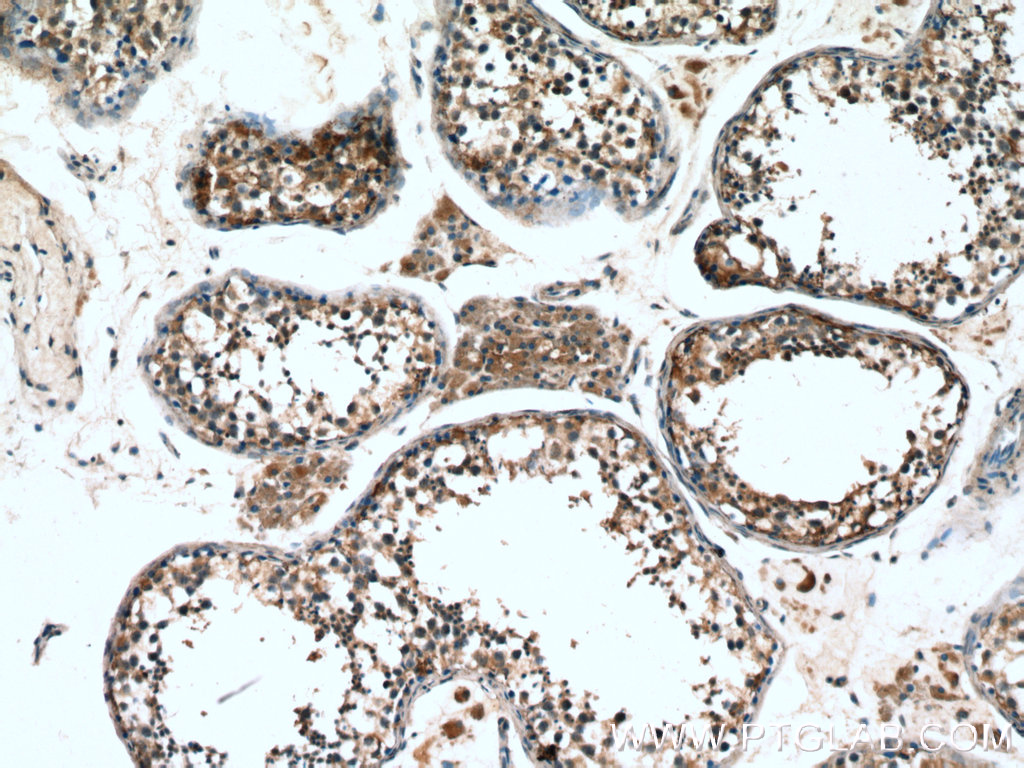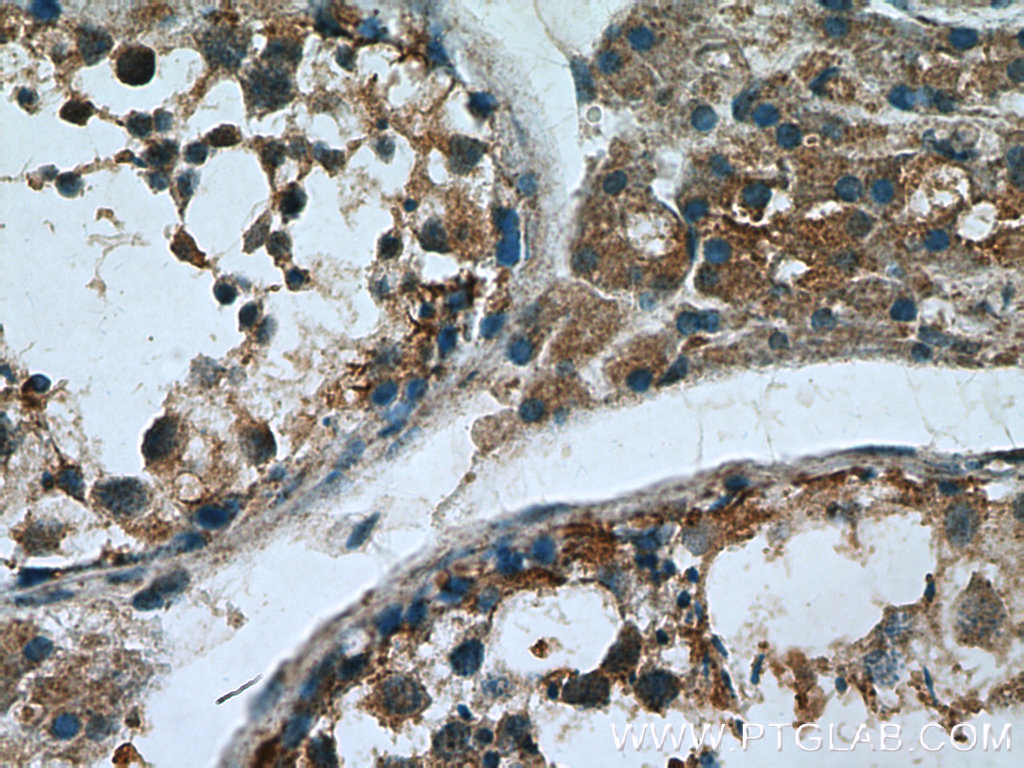验证数据展示
经过测试的应用
| Positive IHC detected in | human testis tissue Note: suggested antigen retrieval with TE buffer pH 9.0; (*) Alternatively, antigen retrieval may be performed with citrate buffer pH 6.0 |
推荐稀释比
| 应用 | 推荐稀释比 |
|---|---|
| Immunohistochemistry (IHC) | IHC : 1:50-1:500 |
| It is recommended that this reagent should be titrated in each testing system to obtain optimal results. | |
| Sample-dependent, Check data in validation data gallery. | |
产品信息
13531-1-AP targets Proenkephalin-A in IHC, ELISA applications and shows reactivity with human samples.
| 经测试应用 | IHC, ELISA Application Description |
| 经测试反应性 | human |
| 免疫原 | Proenkephalin-A fusion protein Ag4428 种属同源性预测 |
| 宿主/亚型 | Rabbit / IgG |
| 抗体类别 | Polyclonal |
| 产品类型 | Antibody |
| 全称 | proenkephalin |
| 别名 | Opioid growth factor, PENK, proenkephalin, Proenkephalin A, Proenkephalin-A |
| 计算分子量 | 267 aa, 31 kDa |
| GenBank蛋白编号 | BC032505 |
| 基因名称 | Proenkephalin A |
| Gene ID (NCBI) | 5179 |
| RRID | AB_2161510 |
| 偶联类型 | Unconjugated |
| 形式 | Liquid |
| 纯化方式 | Antigen affinity purification |
| UNIPROT ID | P01210 |
| 储存缓冲液 | PBS with 0.02% sodium azide and 50% glycerol , pH 7.3 |
| 储存条件 | Store at -20°C. Stable for one year after shipment. Aliquoting is unnecessary for -20oC storage. |
背景介绍
Proenkephalin-A (PENK) is also named as Synenkephalin, Met-enkephalin and Opioid growth factor (OGF), and belongs to the opioid neuropeptide precursor family. PENK is a neuropeptide that competes with and mimics the effects of opiate drugs. They play a role in a number of physiologic functions, including pain perception and responses to stress (PMID:7057924). PENK hypermethylation is also associated with bladder cancer, hepatocellular carcinoma, colorectal cancer, and prostate cancer (PMID:36403035).
实验方案
| Product Specific Protocols | |
|---|---|
| IHC protocol for Proenkephalin-A antibody 13531-1-AP | Download protocol |
| Standard Protocols | |
|---|---|
| Click here to view our Standard Protocols |

